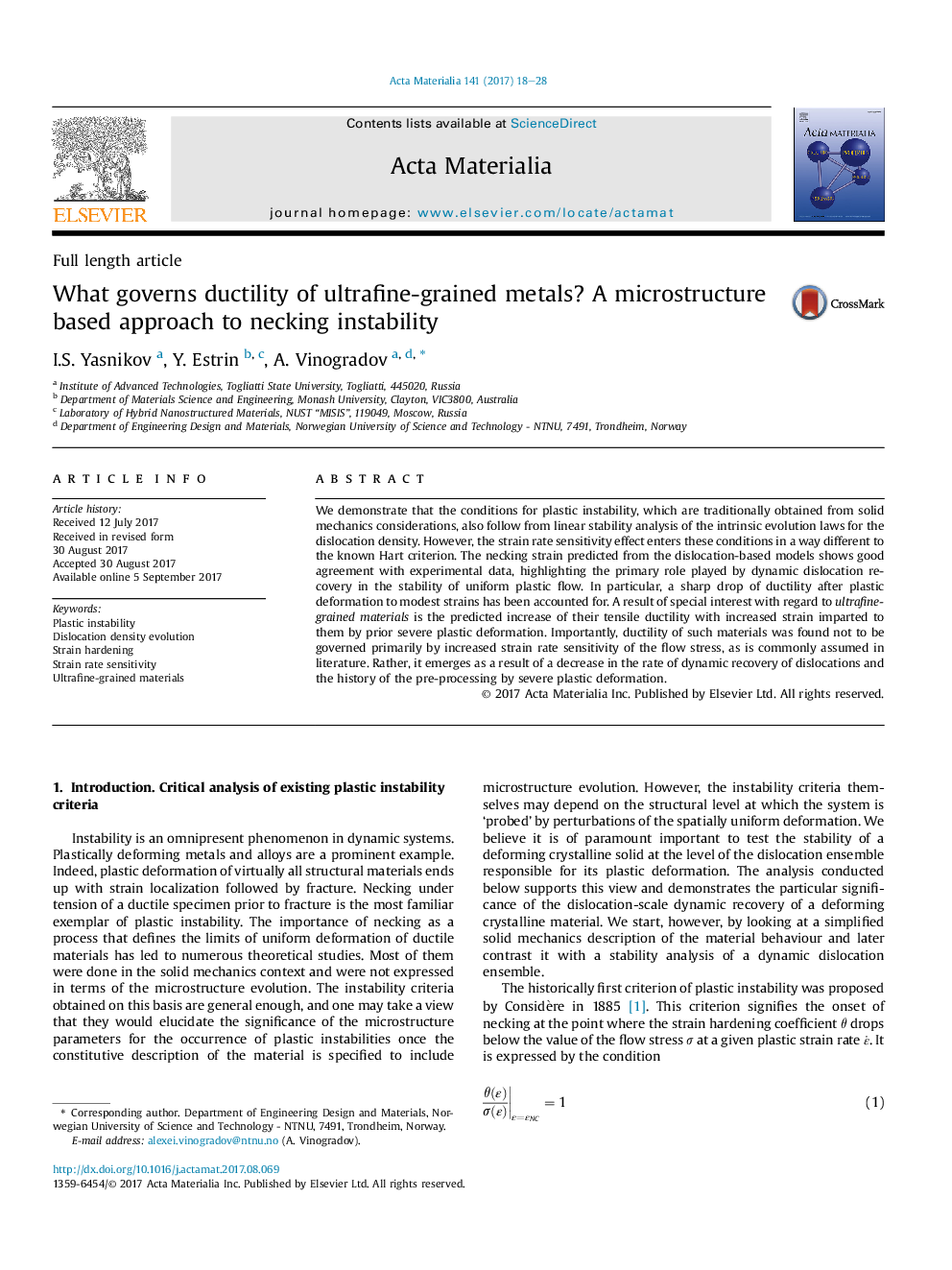| Article ID | Journal | Published Year | Pages | File Type |
|---|---|---|---|---|
| 5435715 | Acta Materialia | 2017 | 11 Pages |
We demonstrate that the conditions for plastic instability, which are traditionally obtained from solid mechanics considerations, also follow from linear stability analysis of the intrinsic evolution laws for the dislocation density. However, the strain rate sensitivity effect enters these conditions in a way different to the known Hart criterion. The necking strain predicted from the dislocation-based models shows good agreement with experimental data, highlighting the primary role played by dynamic dislocation recovery in the stability of uniform plastic flow. In particular, a sharp drop of ductility after plastic deformation to modest strains has been accounted for. A result of special interest with regard to ultrafine-grained materials is the predicted increase of their tensile ductility with increased strain imparted to them by prior severe plastic deformation. Importantly, ductility of such materials was found not to be governed primarily by increased strain rate sensitivity of the flow stress, as is commonly assumed in literature. Rather, it emerges as a result of a decrease in the rate of dynamic recovery of dislocations and the history of the pre-processing by severe plastic deformation.
Graphical abstractDownload high-res image (125KB)Download full-size image
